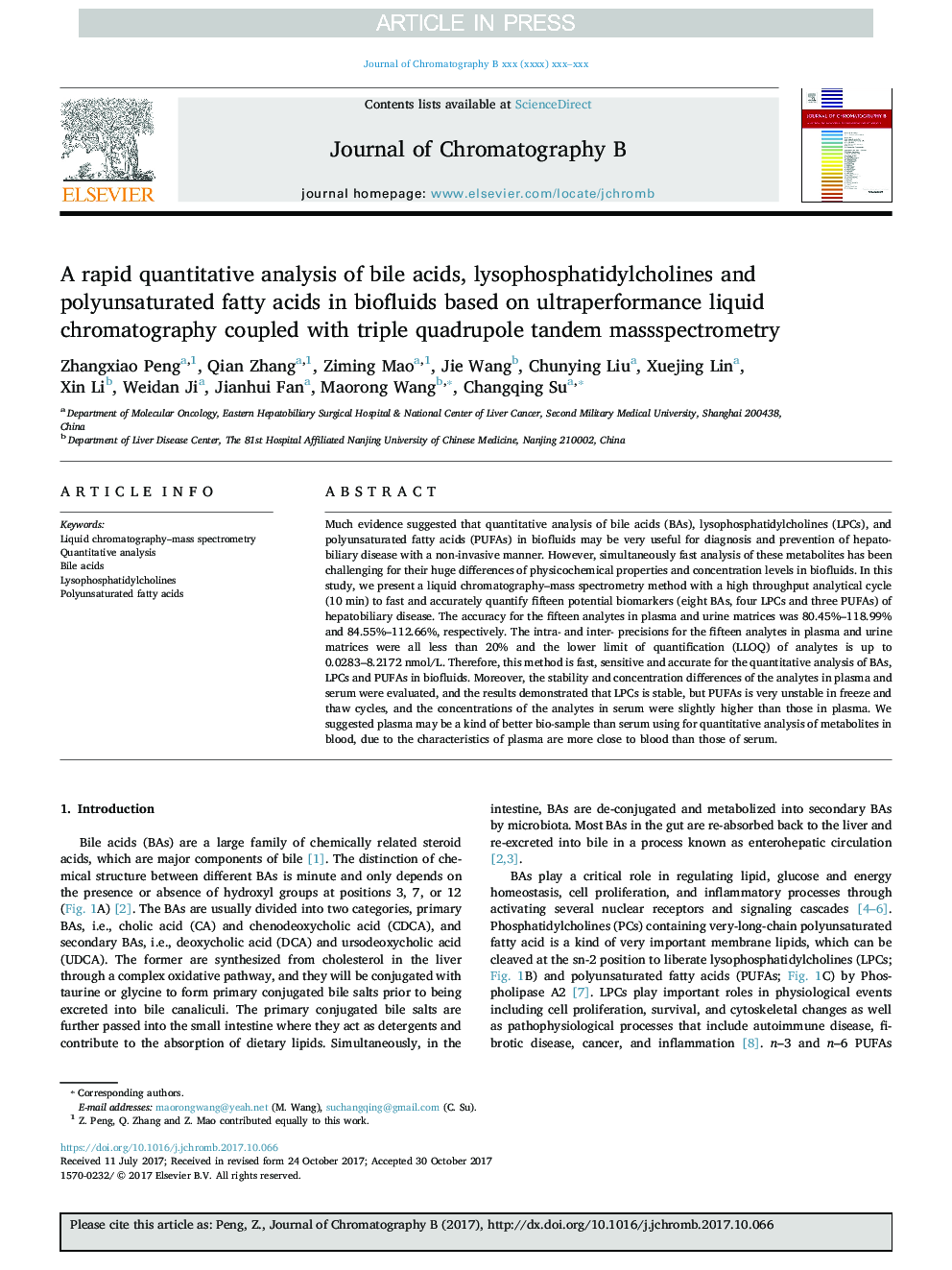| Article ID | Journal | Published Year | Pages | File Type |
|---|---|---|---|---|
| 7615866 | Journal of Chromatography B | 2017 | 9 Pages |
Abstract
Much evidence suggested that quantitative analysis of bile acids (BAs), lysophosphatidylcholines (LPCs), and polyunsaturated fatty acids (PUFAs) in biofluids may be very useful for diagnosis and prevention of hepatobiliary disease with a non-invasive manner. However, simultaneously fast analysis of these metabolites has been challenging for their huge differences of physicochemical properties and concentration levels in biofluids. In this study, we present a liquid chromatography-mass spectrometry method with a high throughput analytical cycle (10Â min) to fast and accurately quantify fifteen potential biomarkers (eight BAs, four LPCs and three PUFAs) of hepatobiliary disease. The accuracy for the fifteen analytes in plasma and urine matrices was 80.45%-118.99% and 84.55%-112.66%, respectively. The intra- and inter- precisions for the fifteen analytes in plasma and urine matrices were all less than 20% and the lower limit of quantification (LLOQ) of analytes is up to 0.0283-8.2172Â nmol/L. Therefore, this method is fast, sensitive and accurate for the quantitative analysis of BAs, LPCs and PUFAs in biofluids. Moreover, the stability and concentration differences of the analytes in plasma and serum were evaluated, and the results demonstrated that LPCs is stable, but PUFAs is very unstable in freeze and thaw cycles, and the concentrations of the analytes in serum were slightly higher than those in plasma. We suggested plasma may be a kind of better bio-sample than serum using for quantitative analysis of metabolites in blood, due to the characteristics of plasma are more close to blood than those of serum.
Keywords
Related Topics
Physical Sciences and Engineering
Chemistry
Analytical Chemistry
Authors
Zhangxiao Peng, Qian Zhang, Ziming Mao, Jie Wang, Chunying Liu, Xuejing Lin, Xin Li, Weidan Ji, Jianhui Fan, Maorong Wang, Changqing Su,
